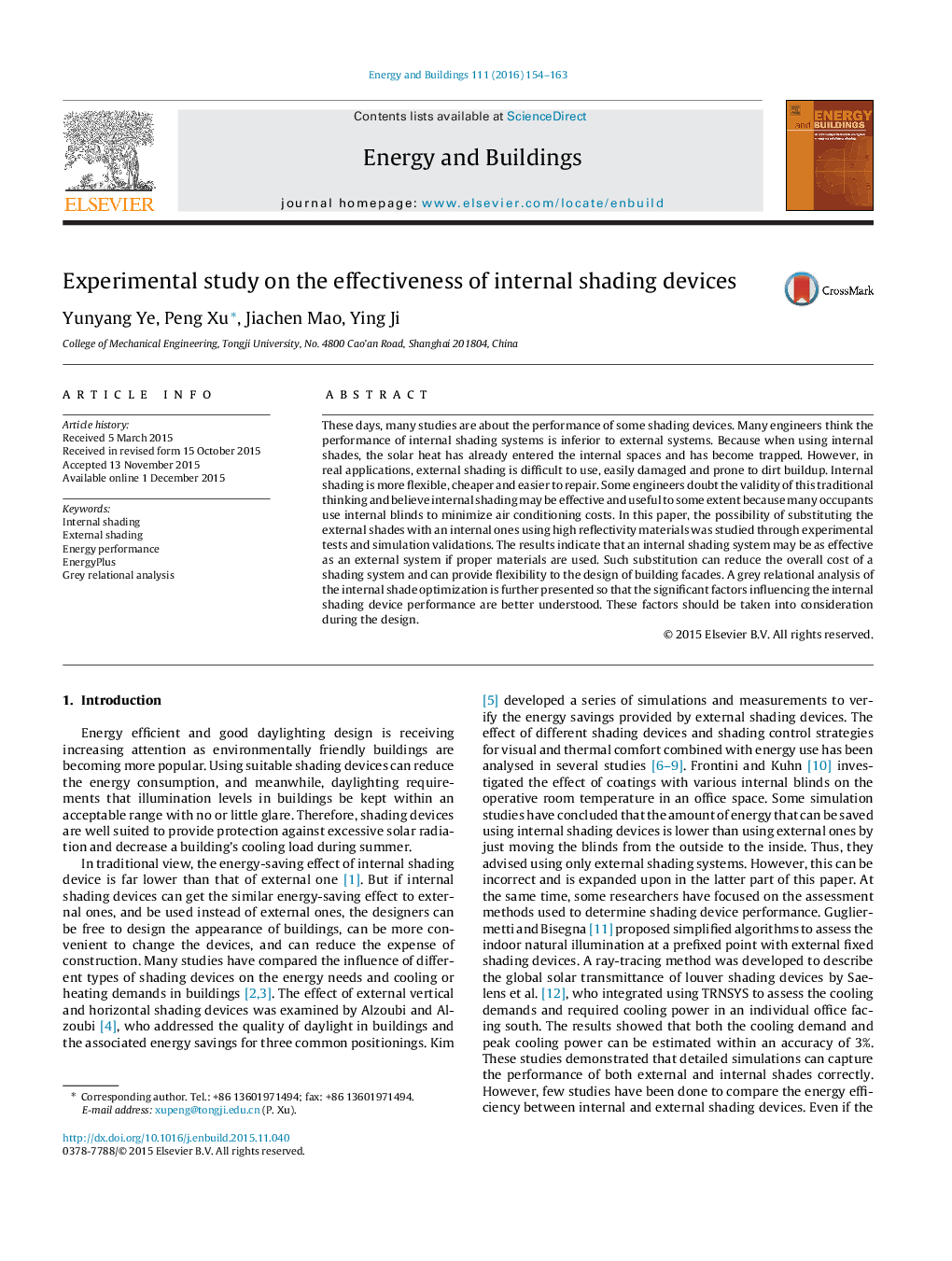| Article ID | Journal | Published Year | Pages | File Type |
|---|---|---|---|---|
| 6730785 | Energy and Buildings | 2016 | 10 Pages |
Abstract
These days, many studies are about the performance of some shading devices. Many engineers think the performance of internal shading systems is inferior to external systems. Because when using internal shades, the solar heat has already entered the internal spaces and has become trapped. However, in real applications, external shading is difficult to use, easily damaged and prone to dirt buildup. Internal shading is more flexible, cheaper and easier to repair. Some engineers doubt the validity of this traditional thinking and believe internal shading may be effective and useful to some extent because many occupants use internal blinds to minimize air conditioning costs. In this paper, the possibility of substituting the external shades with an internal ones using high reflectivity materials was studied through experimental tests and simulation validations. The results indicate that an internal shading system may be as effective as an external system if proper materials are used. Such substitution can reduce the overall cost of a shading system and can provide flexibility to the design of building facades. A grey relational analysis of the internal shade optimization is further presented so that the significant factors influencing the internal shading device performance are better understood. These factors should be taken into consideration during the design.
Related Topics
Physical Sciences and Engineering
Energy
Renewable Energy, Sustainability and the Environment
Authors
Yunyang Ye, Peng Xu, Jiachen Mao, Ying Ji,
